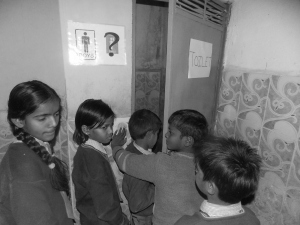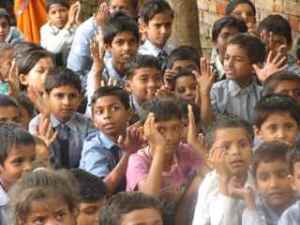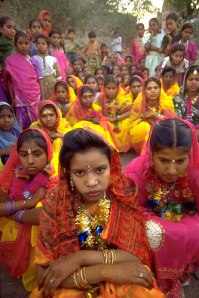By: Sylvie Hughes
Gurgaon, India
19th November 2013
By viewing statistics of toilet access in schools, one can gain an idea of the condition of the country as a whole regarding access to toilet facilities: Of all of India’s rural primary schools, only 1 in 6 have toilet facilities. Often the children have to walk home just to use the toilet, or walk further away to defecate in the open. The amount of time that children have to spend walking a distance to relieve themselves severely disrupts productivity in schools.
The female population are particularly suffering due to these conditions, becoming victims of health problems due to economic disparity. They are unable to grow to find a good career if they drop out of schools with poor sanitation facilities. This in turn leads to a lower living standard, where women face problems of sexual harassment and abuse.
1 in 3 women worldwide risk shame, sexual harassment and attacks due to lack of toilet facilities. In rural areas, where women have to defecate in the open, they face the risk of sexual assault if they have to walk further out to a remote area to defecate, particularly during the night time. As a result, many women are facing health problems caused by waiting until the morning to relieve themselves. For other women, the only time to relieve themselves would be at night time, to avoid being seen by others. In rural areas, incidents of rape are commonly caused by lack of toilet facilities.
In addition to lack of clean toilets, there is a lack in proper sanitation facilities, such as clean running water and soap. In India over 1600 children die every day due to diarrhea related diseases. This is because more than half the population do not wash their hands after defecation, making diseases such as respiratory and gastrointestinal infections major killers among children and adults alike.
A key element to breaking the practice of open defecation is changing the behavior of people who have practiced open defecation for generations. Many rural communities have not had access to education on hygiene practices, therefore are unaware of the serious health risks caused by open defecation. Installing toilet facilities in the area is not sufficient, as they still may not be used by the majority of people who are not used to using toilets. Therefore, providing hand washing and toilet hygiene awareness is crucial to changing the toilet practices of the population.
To those who have lived their whole lives using clean, safe toilets, the figures provided by World Toilet Day would be shocking. The lives of 2.5 billion people are severely affected and even cut short because they have no toilets. Access to toilets should not be a privilege but a basic right for every person.
Let’s celebrate our toilets on World Toilet Day! Join HEEALS in our mission to provide clean toilet facilities to schools and rural and urban slum areas across India.
HEEALS (Health, Education, Environment And Livelihood Society), is working on Water Sanitation, Menstrual Hygiene and Toilet Building projects in five states: Delhi (National Capital Region), Uttar Pradesh, Rajasthan, Leh Ladakh, Himachal Pradesh and Haryana.
HEEALS works in slum schools, schools in unauthorised colonies, orphanages and refugee camps. Through spreading education on Sanitation and Menstrual Hygiene and building clean safe, toilets HEEALS is working to increase the attendance rates of pupils in schools, reduce the number of diseases and deaths and improve the health of people across Indian society. Find out more about its projects at http://www.heeals.org and support our work!
Sources: UNICEF, RTE Forum
Gurgaon, India
19th November 2013
The figures provided by World Toilet Day reveal that 2.5
billion people in the world do not have access to clean toilets. India
has the largest number of people defecating in the open in the world. A
staggering 638 million still practice open defecation, and less than
half of India’s population are using toilets. Lack of hygiene
awareness, lack of access to facilities, and social and behavioral
patterns are the main causes of high disease rates, lack of education
opportunities and deaths across the country.
By viewing statistics of toilet access in schools, one can gain an idea of the condition of the country as a whole regarding access to toilet facilities: Of all of India’s rural primary schools, only 1 in 6 have toilet facilities. Often the children have to walk home just to use the toilet, or walk further away to defecate in the open. The amount of time that children have to spend walking a distance to relieve themselves severely disrupts productivity in schools.
In girl’s schools in particular, the problem is graver: 66 % of girls’ schools do not have functioning toilets. Around 23 %
of girls drop out of school every year in India due to lack of proper
toilet facilities. Many school toilets are not gender segregated, making
trips to the toilet uncomfortable or intimidating experiences for
girls. Many toilets also do not provide adequate menstrual hygiene
facilities such a bins to dispose sanitary pads. Girls are either forced
to return home to use the toilet or change pads, or decide to drop out
of school completely.
The female population are particularly suffering due to these conditions, becoming victims of health problems due to economic disparity. They are unable to grow to find a good career if they drop out of schools with poor sanitation facilities. This in turn leads to a lower living standard, where women face problems of sexual harassment and abuse.
1 in 3 women worldwide risk shame, sexual harassment and attacks due to lack of toilet facilities. In rural areas, where women have to defecate in the open, they face the risk of sexual assault if they have to walk further out to a remote area to defecate, particularly during the night time. As a result, many women are facing health problems caused by waiting until the morning to relieve themselves. For other women, the only time to relieve themselves would be at night time, to avoid being seen by others. In rural areas, incidents of rape are commonly caused by lack of toilet facilities.
In addition to lack of clean toilets, there is a lack in proper sanitation facilities, such as clean running water and soap. In India over 1600 children die every day due to diarrhea related diseases. This is because more than half the population do not wash their hands after defecation, making diseases such as respiratory and gastrointestinal infections major killers among children and adults alike.
A key element to breaking the practice of open defecation is changing the behavior of people who have practiced open defecation for generations. Many rural communities have not had access to education on hygiene practices, therefore are unaware of the serious health risks caused by open defecation. Installing toilet facilities in the area is not sufficient, as they still may not be used by the majority of people who are not used to using toilets. Therefore, providing hand washing and toilet hygiene awareness is crucial to changing the toilet practices of the population.
To those who have lived their whole lives using clean, safe toilets, the figures provided by World Toilet Day would be shocking. The lives of 2.5 billion people are severely affected and even cut short because they have no toilets. Access to toilets should not be a privilege but a basic right for every person.
Let’s celebrate our toilets on World Toilet Day! Join HEEALS in our mission to provide clean toilet facilities to schools and rural and urban slum areas across India.
HEEALS (Health, Education, Environment And Livelihood Society), is working on Water Sanitation, Menstrual Hygiene and Toilet Building projects in five states: Delhi (National Capital Region), Uttar Pradesh, Rajasthan, Leh Ladakh, Himachal Pradesh and Haryana.
HEEALS works in slum schools, schools in unauthorised colonies, orphanages and refugee camps. Through spreading education on Sanitation and Menstrual Hygiene and building clean safe, toilets HEEALS is working to increase the attendance rates of pupils in schools, reduce the number of diseases and deaths and improve the health of people across Indian society. Find out more about its projects at http://www.heeals.org and support our work!
Sources: UNICEF, RTE Forum









.jpg)
